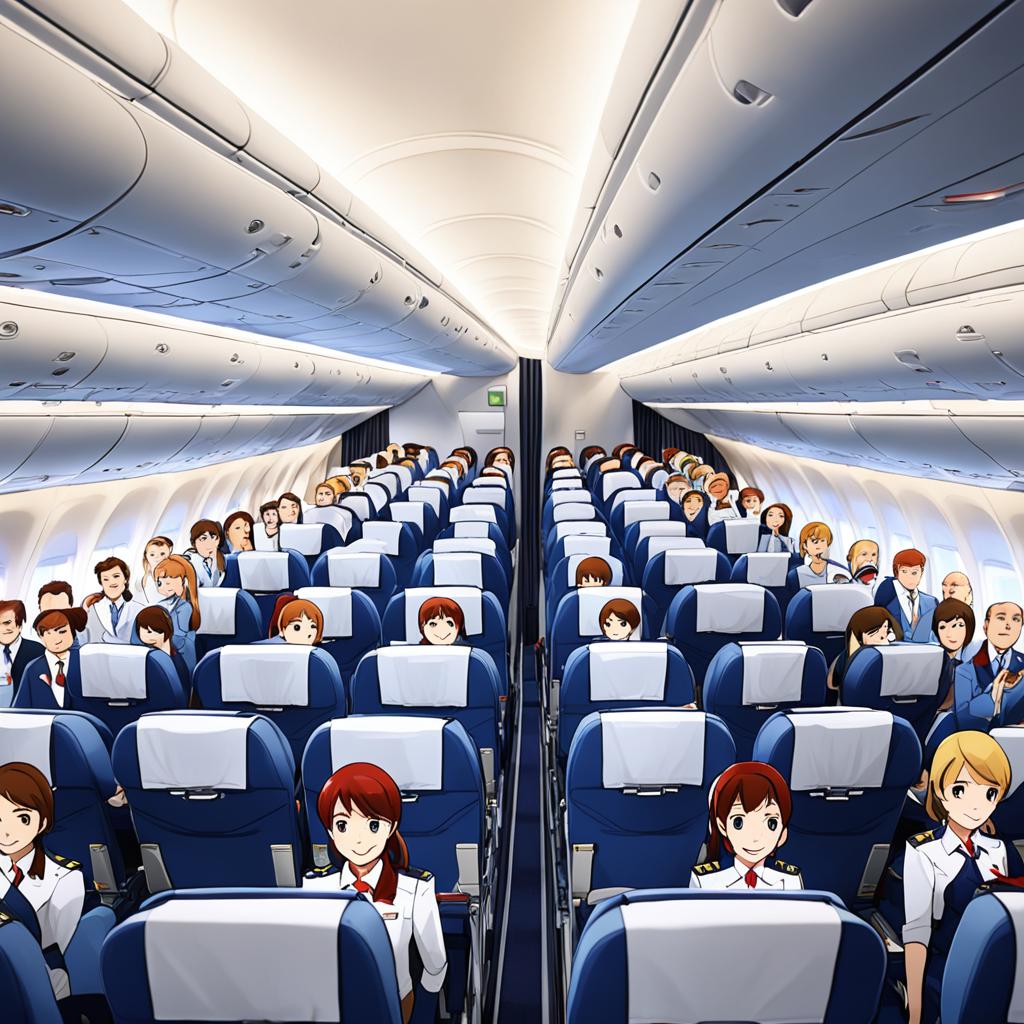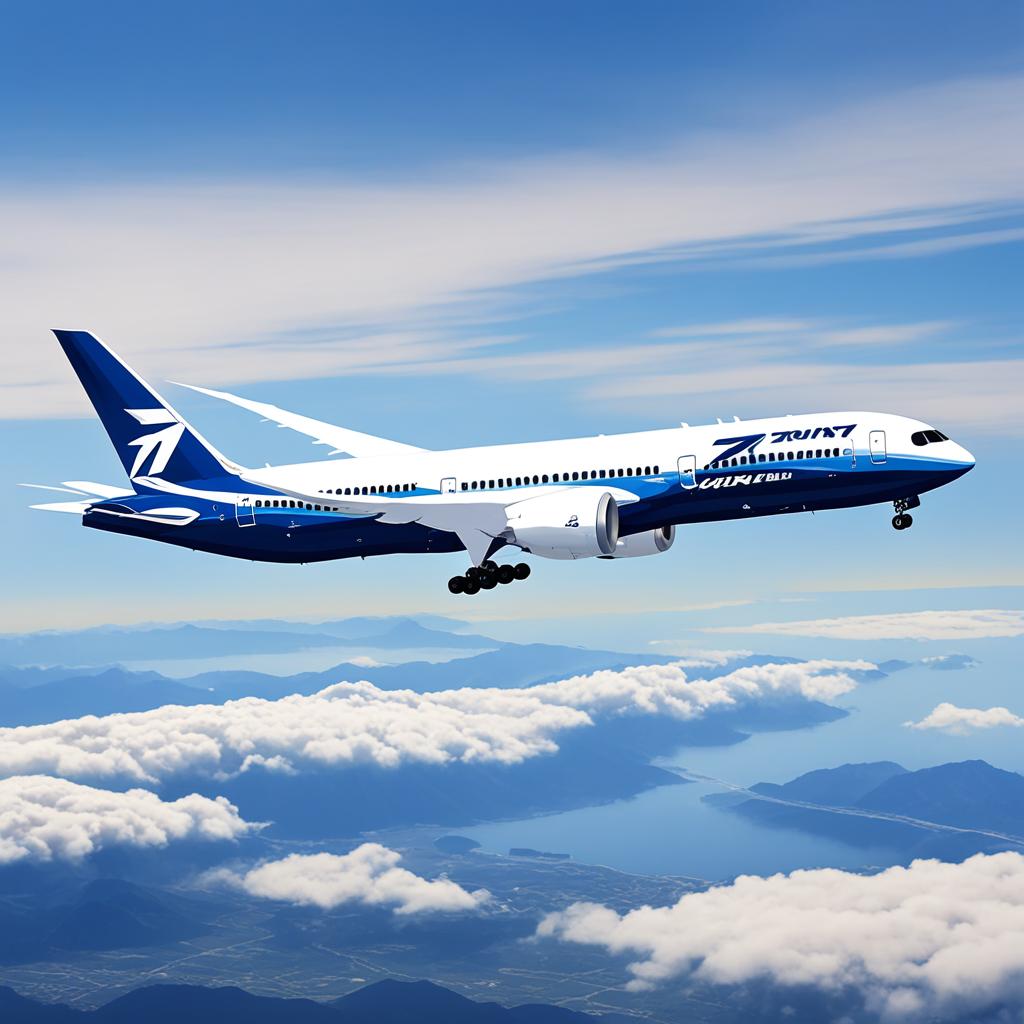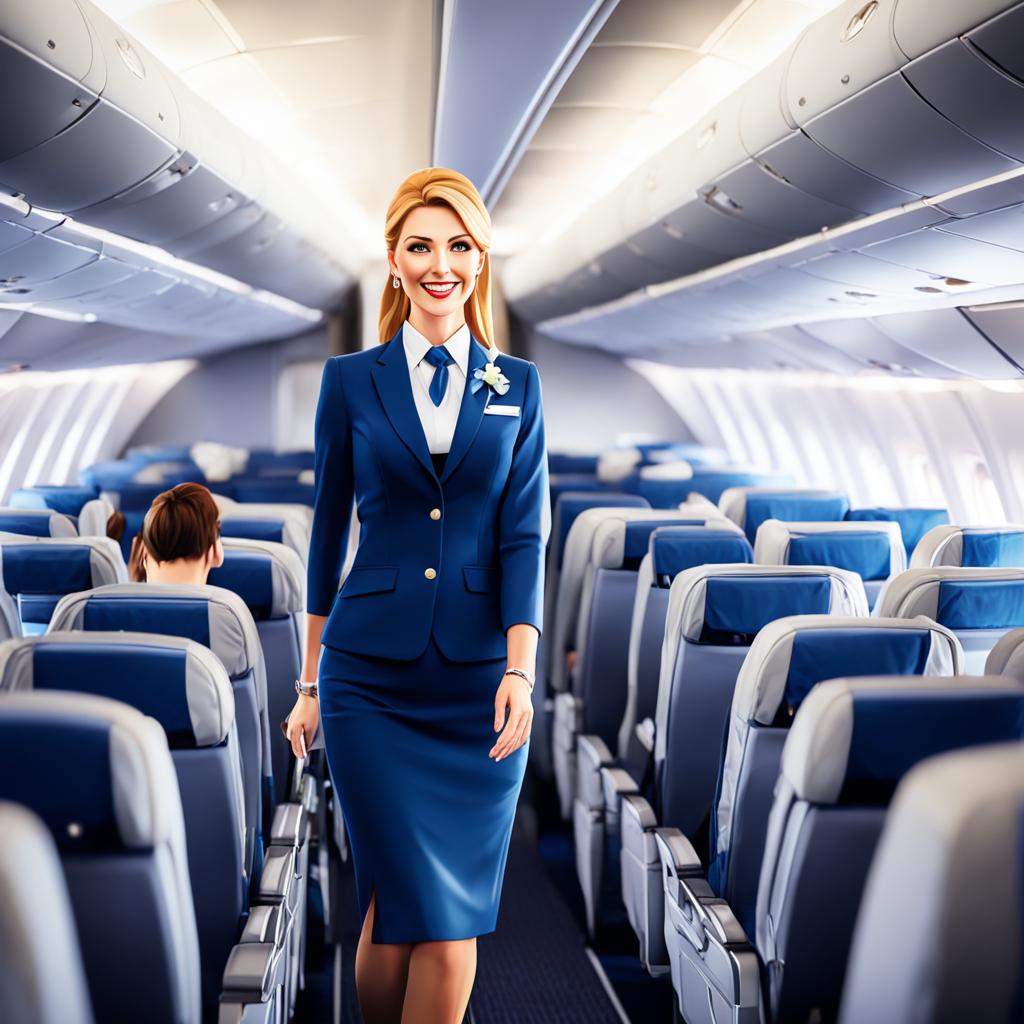Have you ever wondered how many flight attendants are on board a Boeing 787 aircraft? The answer might surprise you. While the number of flight attendants is determined by various factors, including FAA regulations and airline policies, the seating capacity of the aircraft plays a crucial role.
So, how many flight attendants does a 787 have? Let’s explore the regulations, variations, and factors that influence the number of flight attendants on this popular aircraft.
FAA Requirements for Flight Attendants on a 787

When it comes to the number of flight attendants on a Boeing 787, the Federal Aviation Administration (FAA) has clear requirements in place. These regulations ensure passenger safety and the ability to provide adequate service onboard.
The FAA mandates that an airplane must have at least one flight attendant for every 50 passengers. As a result, the number of flight attendants on a 787 is directly determined by the seating capacity of the aircraft. Let’s take a closer look at the FAA requirements:
| Seating Capacity | Number of Flight Attendants |
|---|---|
| 20 – 50 | 1 |
| 51 – 100 | 2 |
| 101 – 150 | 3 |
| 151 – 200 | 4 |
| 201 – 250 | 5 |
| 251 – 300 | 6 |
For every additional 50 passengers above 300, an extra flight attendant is required. It’s important to note that these numbers are the minimum requirements set by the FAA and can vary based on airline policies and specific flight conditions.
Ensuring the appropriate number of flight attendants is essential for maintaining a safe and comfortable flying experience for passengers. Airlines must carefully adhere to these FAA requirements when determining the crew composition for their Boeing 787 flights.
Variations in Flight Attendant Numbers on a 787
While the Federal Aviation Administration (FAA) sets the minimum requirements for flight attendants on a Boeing 787, airlines have the flexibility to choose additional flight attendants based on various factors. These factors include the airline’s policies and the type of flight being operated.
On longer international routes, airlines often opt to have more flight attendants on board, particularly if the flight is expected to be at full capacity. The additional flight attendants help ensure a higher level of service and attend to the needs of a larger number of passengers.
Furthermore, some airlines place a significant emphasis on service and customer experience, leading them to have more flight attendants than the minimum requirements set by the FAA. This allows airlines to provide a more personalized and attentive service to their passengers, enhancing the overall flying experience.
It’s important to note that the number of flight attendants on a Boeing 787 can vary significantly between airlines and even between different flights operated by the same airline. Factors such as the airline’s brand identity, target market, and specific route may influence the decision to have more flight attendants on board.
Overall, while the FAA regulations provide a baseline for flight attendant numbers on a 787, airlines have the flexibility to adapt to their unique circumstances and customer service priorities.
Examples of Flight Attendant Numbers on a 787

The exact number of flight attendants on a Boeing 787 can vary based on the airline and the specific configuration of the aircraft. Let’s take a look at some examples:
| Airline | Flight Attendant Numbers on a 787 |
|---|---|
| Etihad Airways | 13 to 16 flight attendants |
| Virgin Atlantic | 13 flight attendants |
| British Airways | Around 8 flight attendants |
These figures may change depending on the airline’s policies and the specific route being flown. It’s worth noting that airlines may have different requirements and configurations, resulting in varying numbers of flight attendants on a 787.
Note: The examples provided are for illustrative purposes and may not represent the current or precise flight attendant numbers for the respective airlines and aircraft.
Factors Affecting Flight Attendant Numbers on a 787
When it comes to determining the number of flight attendants on a Boeing 787, several factors come into play. One of the primary factors is the seating capacity of the aircraft. As per FAA regulations, the number of flight attendants required depends on the number of passengers onboard. Generally, one flight attendant is needed for every 50 passengers. However, keep in mind that individual airlines may have slightly different policies in place.
Another factor that influences flight attendant numbers is the airline’s policies. Some airlines may choose to have more flight attendants on a 787 to provide enhanced customer service and ensure passenger safety. On the other hand, certain airlines may decide to meet only the minimum requirements set by the FAA.
The type of flight, whether it is domestic or international, is also a significant factor. Long-haul international flights tend to have more flight attendants on board due to the longer duration and higher passenger load. The additional flight attendants help maintain a high level of customer service and attend to passenger needs throughout the extended journey.
Lastly, an airline’s current economic conditions can influence the number of flight attendants on a 787. In challenging financial times, airlines may make adjustments to their staffing levels to manage costs effectively.
In conclusion, various factors, including seating capacity, airline policies, flight type, and economic conditions, impact the number of flight attendants on a Boeing 787. It’s essential to understand that these numbers can vary across different airlines. If you need specific information about the flight attendant numbers on a 787, it is best to reach out to the airline directly for the most up-to-date and accurate information.
FAQ
Q: How many flight attendants does a Boeing 787 have?
A: The number of flight attendants on a Boeing 787 depends on the seating capacity of the aircraft. The FAA regulations state that an airplane with a seating capacity of 20 to 50 requires one flight attendant, while an airplane with a seating capacity of 51 to 100 requires two flight attendants. The number of flight attendants increases by one for every 50 passengers above 100 passengers.
Q: What are the FAA requirements for flight attendants on a Boeing 787?
A: The FAA requires that airplanes have at least one flight attendant per 50 passengers. On a Boeing 787, the number of flight attendants will vary based on the seating capacity of the aircraft. For example, a 787 with a seating capacity of 20 to 50 will have one flight attendant, while a 787 with a seating capacity of 51 to 100 will have two flight attendants.
Q: Do airlines have variations in flight attendant numbers on a Boeing 787?
A: Yes, airlines may choose to have additional flight attendants on board a Boeing 787. Factors such as the airline’s policies and the type of flight can influence the number of flight attendants. For example, on longer international routes or if the flight is full, airlines may have more flight attendants on board. Some airlines may also choose to have more flight attendants than the minimum requirements set by the FAA.
Q: Can you provide examples of flight attendant numbers on a Boeing 787?
A: The exact number of flight attendants on a Boeing 787 can vary based on the airline and the specific configuration of the aircraft. For example, Etihad Airways may have 13 to 16 flight attendants on a 787, Virgin Atlantic may have 13 flight attendants, and British Airways generally has around 8 flight attendants on a 787. These numbers may change based on the airline’s policies and the specific route being flown.
Q: What factors affect the number of flight attendants on a Boeing 787?
A: Several factors can affect the number of flight attendants on a Boeing 787. These factors include the seating capacity of the aircraft, the airline’s policies, the type of flight (domestic or international), and the airline’s current economic conditions. Airlines may adjust the number of flight attendants based on these factors to ensure passenger safety and provide adequate service.
